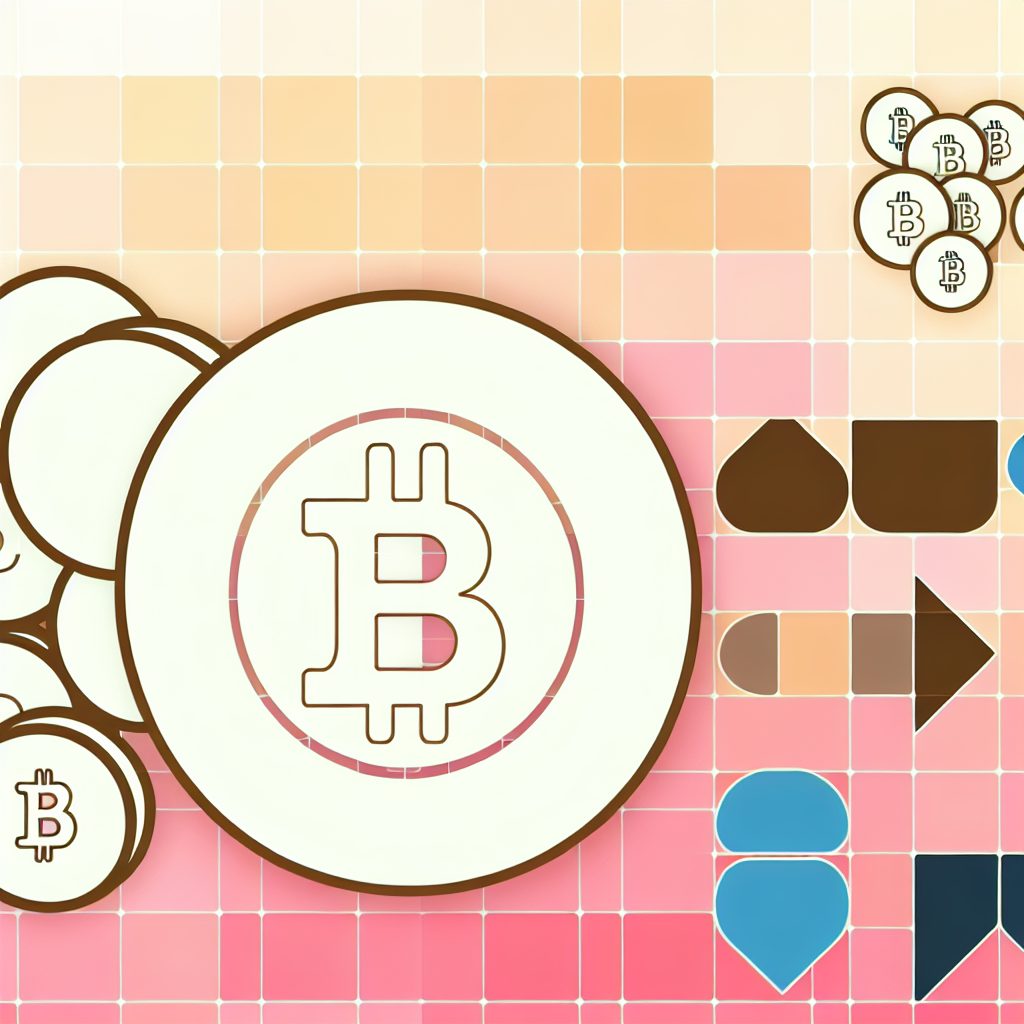Understanding Satoshi Units in Bitcoin
Bitcoin, the pioneering cryptocurrency, has revolutionized the way we perceive money and transactions. At the heart of this digital currency lies the concept of Satoshi, a fundamental unit that plays a crucial role in the Bitcoin ecosystem. Understanding Satoshi units is essential for anyone looking to navigate the world of Bitcoin, whether you’re a seasoned investor or a curious newcomer. This article delves into the intricacies of Satoshi units, their significance, and how they fit into the broader cryptocurrency landscape.
What is a Satoshi?
A Satoshi is the smallest unit of Bitcoin, named after the mysterious creator of Bitcoin, Satoshi Nakamoto. One Bitcoin (BTC) is divisible into 100 million Satoshis, making it possible to conduct transactions with very small amounts of Bitcoin. This divisibility is crucial for the practical use of Bitcoin as a currency, especially given its increasing value over time.
To put this into perspective, if Bitcoin were to reach a price of $1 million, one Satoshi would be worth just $0.01. This level of granularity allows for microtransactions, which can be particularly useful in various applications, from tipping content creators to making small purchases online.
The Importance of Satoshi Units
Understanding Satoshi units is vital for several reasons:
- Accessibility: Satoshis make Bitcoin accessible to a broader audience. Not everyone can afford to buy a whole Bitcoin, especially as its price continues to rise.
- Microtransactions: The ability to transact in Satoshis enables microtransactions, which can facilitate new business models and revenue streams.
- Precision: Satoshis allow for precise calculations and transactions, reducing the risk of rounding errors in financial dealings.
How Satoshis Work in Transactions
When you send or receive Bitcoin, you are actually dealing with Satoshis. For example, if you want to send 0.001 BTC, you are sending 100,000 Satoshis. This system of measurement is crucial for ensuring that transactions can be made in very small increments, which is particularly important in a world where Bitcoin’s value can fluctuate significantly.
Bitcoin wallets typically display balances in BTC, but they often allow users to view their balances in Satoshis as well. This dual display can help users better understand the value of their holdings and the potential for microtransactions.

Real-World Applications of Satoshis
The use of Satoshis extends beyond simple transactions. Here are some real-world applications:
- Tipping: Platforms like Twitter and Reddit have integrated Bitcoin tipping systems, allowing users to send small amounts of Bitcoin (in Satoshis) to content creators as a form of appreciation.
- Gaming: In the gaming industry, Satoshis can be used for in-game purchases, allowing players to buy items or upgrades without needing to spend large amounts of Bitcoin.
- Charity: Charitable organizations are increasingly accepting Bitcoin donations, often in Satoshis, making it easier for donors to contribute small amounts.
How to Convert Bitcoin to Satoshis
Converting Bitcoin to Satoshis is straightforward. Since one Bitcoin equals 100 million Satoshis, you can use the following formula:
Satoshis = Bitcoin x 100,000,000
For example, if you have 0.05 BTC, you can calculate the equivalent in Satoshis:
0.05 BTC x 100,000,000 = 5,000,000 Satoshis
This conversion is essential for understanding transaction fees, which are often calculated in Satoshis per byte of data.
Bitcoin Transaction Fees and Satoshis
Transaction fees in the Bitcoin network are typically measured in Satoshis per byte. This means that the size of your transaction in bytes will determine how many Satoshis you need to pay as a fee. During times of high network congestion, fees can increase significantly, making it essential for users to understand how to calculate and optimize their transaction fees.
For instance, if the average fee is 100 Satoshis per byte and your transaction is 250 bytes, you would pay:
100 Satoshis/byte x 250 bytes = 25,000 Satoshis
Being aware of these fees can help users make informed decisions about when to send transactions, especially during peak times.
Understanding Bitcoin’s Supply and Satoshi Units
The total supply of Bitcoin is capped at 21 million coins. This finite supply means that as demand increases, the value of Bitcoin—and consequently, Satoshis—can also rise. The halving events that occur approximately every four years further reduce the rate at which new Bitcoins are created, impacting the overall supply and demand dynamics.
As Bitcoin becomes more scarce, the importance of Satoshis grows. Investors and users alike will need to consider their holdings in Satoshis, especially as the price of Bitcoin continues to climb.
Future of Satoshis in the Cryptocurrency Ecosystem
The future of Satoshis looks promising as more people adopt Bitcoin for various uses. As the cryptocurrency market matures, we can expect to see:
- Increased Adoption: More businesses and platforms will likely accept Bitcoin payments, leading to a greater need for Satoshi transactions.
- Innovative Use Cases: New applications and services will emerge that leverage the ability to transact in Satoshis, particularly in areas like remittances and micropayments.
- Enhanced User Experience: Wallets and exchanges will continue to improve their interfaces, making it easier for users to understand and manage their Satoshi holdings.
Frequently Asked Questions (FAQs)
What is the value of one Satoshi?
The value of one Satoshi is determined by the current price of Bitcoin. For example, if Bitcoin is priced at $50,000, one Satoshi would be worth $0.0005.
How do I buy Satoshis?
You can buy Satoshis by purchasing Bitcoin through a cryptocurrency exchange. Most exchanges allow you to buy fractions of a Bitcoin, which means you can acquire Satoshis.
Can I send Satoshis directly?
Yes, when you send Bitcoin, you are effectively sending Satoshis. You can specify the amount in BTC or Satoshis when making a transaction.
Why are Satoshis important?
Satoshis are important because they allow for microtransactions, making Bitcoin accessible to a wider audience and enabling new business models.
How do transaction fees work in Satoshis?
Transaction fees are calculated in Satoshis per byte. The size of your transaction in bytes will determine the total fee you need to pay.
Conclusion
Understanding Satoshi units is essential for anyone involved in the cryptocurrency space. As Bitcoin continues to gain traction as a legitimate form of currency, the significance of Satoshis will only grow. From facilitating microtransactions to enabling precise financial dealings, Satoshis are a fundamental aspect of the Bitcoin ecosystem.
As you navigate the world of Bitcoin, keep in mind the importance of Satoshis in your transactions and investments. For the latest news and updates on cryptocurrency, consider visiting Bitrabo. You can also follow me on social media for more insights: X, Instagram, and Threads.
Disclaimer: This article is for informational purposes only and should not be considered financial advice. Always do your own research before investing in cryptocurrencies.
The Crypto Watchlist of the Week 🔎
Subscribe to receive expert-curated projects with real potential—plus trends, risks, and insights that matter. Get handpicked crypto projects, deep analysis & market updates delivered to you.


